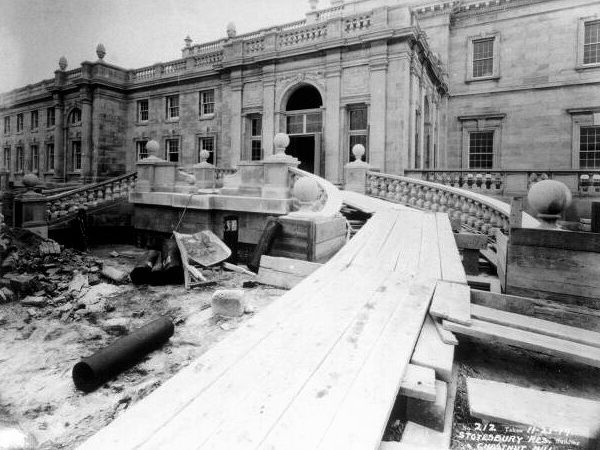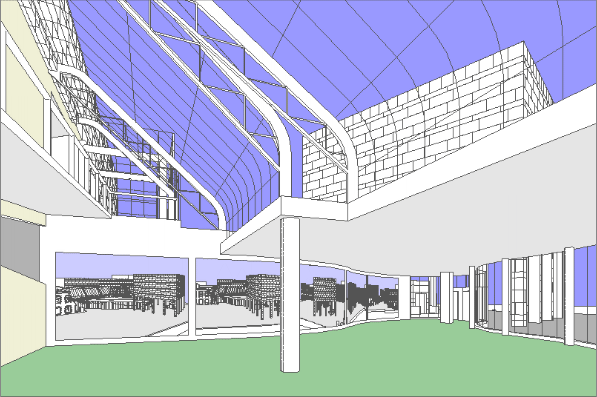1999.11.21 08:15
(third of) Top 10
The Iron Curtain and the Berlin Wall
What other built form of the twentieth century had such power, yet, in the end, was also so disposable?
An example of extreme modernism?
1999.11.21 08:31
(fifth of) Top 10
Le Corbusier's notion of the promenade architecturale.
Too bad most architects don't even know the full extent of what that is exactly.
2000.11.21
synthesis
Alex wrote:
Where is this 'immaterial' realm where the circle exists? I would like to make contact with it…….. It is worth noting that these 'perfect' shapes: circle (sphere) or cube or pyramid, etc. do not exist in nature. (The Earth, for instance is an oblate spheroid in other words, a sphere fattened at the equator). I am reminded here in Paul's thinking of Ptolemaic and Renaissance astronomies. They thought planets revolved in pure Pythagorean spheres (with musical accompaniment.) It took Kepler and Newton to show them they were wrong: the ellipse was the answer. Anyway, these perfect shapes do not exist other than as idealizations in peoples minds.
Steve comments:
While I agree with Alex about there really being no 'perfect' shapes in actual existence, I nonetheless can't help but believe that the real 'inspiration' for the perfect circle comes from the pupils of our very own eyes. Who knows, it might even be the physical 'perfection' of our sight perception organ that somehow makes our brains/minds think ideals exist in the first place. Kind of like the medium being the message.
| |
2002.11.21 14:04
what a difference 250 years make
Well, I did make a pilgrimage this morning down to Ridge Avenue and Buttonwood Street, Philadelphia, where "legend" has it that Benjamin Franklin flew a kite with key and discovered that lightening and electricity are the same thing 250 years ago. Although in an area still full of a lot of old warehouses, many now facilitating Chinese/Oriental businesses relative to Chinatown several blocks south, the "historic site" is an otherwise somewhat decrepit part of the city. There actually is an empty lot just east of Ridge Avenue on Buttonwood Street, and that's what I took pictures of. Otherwise, there is nothing at all to suggest that something of quite modern significance ever happen at this place, except perhaps the rather large outdoor electrical power station enclosed within a high chain-link fence a half block south on the other side of Ridge Avenue.
I had somewhat heightened expectations of my visitation since deciding to go yesterday morning. Last night I was watching a movie over a friends place, and I asked, "Do you know where Buttonwood Street is. I think it's right around Ridge and Spring Garden." My friend didn't have any idea, but offered me a SEPTA (Southeastern Pennsylvania Transportation Authority) map. I found Buttonwood Street a block south of Spring Garden Street, and I thought I actually knew the site because I thought it was where a building I finally photographed this past February was. This building/warehouse is one I've known since my college days, and I always admired it because of its facade's striking similarity with the facade of Venturi and Rauch's D'Agostino House (1968, unbuilt). I then found myself even wondering whether Venturi actually knew this warehouse because, just maybe, Venturi had once gone to make his own pilgrimage to Ridge and Buttonwood. Alas, the warehouse I know is not at Ridge and Buttonwood, rather at a similar intersection with Ridge Avenue a block north of Spring Garden Street. It should be noted that Ridge Avenue is one of Philadelphia's old zig-zagging diagonal streets in contrast to the otherwise planned grid of streets, off the grid because it follows an old "Indian" trail, and in Franklin's time was the main route out of town to the north-western countryside.
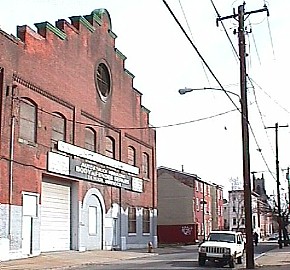 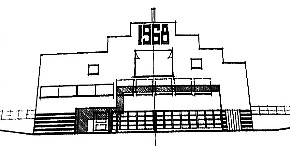
I now find myself wondering what all this "says" about us in the beginning of the 21st century, a people so reliant on electricity, yet otherwise largely oblivious to how we got that way. There is a tiny triangular block just south of the empty lot on Buttonwood Street with a small used-car business on it. I knocked on the office door, and a tall black Muslim (I assume by his garb) man in his thirties answered. I asked him if heard of the story of Benjamin Franklin flying a kite and "discovering" electricity. He said, "I don't think I ever heard dat." I told him Franklin did it here over 200 years ago. He said, "What? In dis building?" I said, "No. Like over there." Then he asked in a kind of mean voice, "Why you sayin' all dis?" I then smiled, but I didn't say much more.
As I drove home up Broad Street I thought to myself in irony, "Well that was a swell way to celebrate Quondam's 6th anniversary." And then I thought, if that's what Franklin's kite flying site is like after 250 years, God only knows what Quondam will be 244 years from now.
2003.11.21 16:24
Re: Virtual and Real
Quondam - A Virtual Museum of Architecture celebrates its 7th anniversary online today.
The weather in Philadelphia today is gorgeous, and I was going to visit the closest real museum to me--Ryerss Museum and Library--to look at a pieces of the Coliseum and the Great Wall and even the full contents of a Japanese Buddhist Temple. The Ryerss Mansion is a wonderful example of a house that morphed into a museum, and the contents of the museum are all the things that the last residents of the Ryerss Mansion purchased about 100 years ago as they traveled around the world, particularly through the Orient. For a couple of years now I like to refer to the Ryerss Museum as a "Museum of Someone's [Global] Shopping." I didn't make it to Ryerss, though, because my trip to the bank, the post office (sending things to eBay shoppers in New York and Italy), and the supply store took longer than expected. I might go to Ryerss tomorrow or Sunday, however.
2003.11.21 17:00
virtual guggenheim?
The Virtual Guggenheim is so beyond virtual that it's actually not there.
| |
2006.11.21
quondam Quondam
21 November 1958 - moved into 5233 Arbor Street.
21 November 1996 - Quondam, a virtual museum of architecture, begins its online existence, originating from the basement of 5233 Arbor Street.
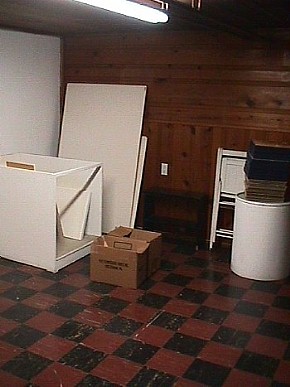
21 November 2006 - quondam Quondam.
2011.11.21 08:40
how convinced are you?
Now I see how the virtual has been my escape.
Is theory an escape?
Is teaching an escape?
Is drawing an escape?
Is writing an escape?
escape
1. to slip or get away, as from confinement or restraint; gain or regain liberty: to escape from jail.
2. to slip away from pursuit or peril; avoid capture, punishment, or any threatened evil.
3. to issue from a confining enclosure, as a fluid.
4. to slip away; fade: The words escaped from memory.
5. Botany. (of an originally cultivated plant) to grow wild.
6. (of a rocket, molecule, etc.) to achieve escape velocity.
7. to slip away from or elude (pursuers, captors, etc.): He escaped the police.
8. to succeed in avoiding (any threatened or possible danger or evil): She escaped capture.
9. to elude (one's memory, notice, search, etc.).
10. to fail to be noticed or recollected by (a person): Her reply escapes me.
11. (of a sound or utterance) to slip from or be expressed by (a person, one's lips, etc.) inadvertently.
| |
2011.11.21 14:00
how convinced are you?
The next time I file my income tax, under 'ocupation' I'll write e-scape architect.
e-scape expanded e-scape
theory e-scape theory
e-scape teaching e-scape
drawing e-scape drawing
e-scape writing e-scape
2013.11.21 21:36
21 November
Read this earlier today:
At times, too, I've had the impression that I'd manage to feel quite at home in a life of vacuity. That the relatively painless boredom would enable me to go on making the usual gestures of life. Another big mistake. Prolonged boredom is not tenable as a position: sooner or later it is transformed into feelings that are acutely more painful, of true pain; this is precisely what's happening to me.
Maybe, I tell myself, this tour of the provinces is going to alter my ideas. Doubtless in a negative sense, but it's going to alter my ideas; at least there will be a change of direction, a shake-up."
That's how part one of Houellebecq's Whatever ends. I think it's a great passage, but I found myself laughing as I typed it here. I guess because it sounds so dark, but a sad, dull dark. Does it perhaps describe archinect/forum these days? I'm laughing again.
Modeling Ichnographia Quondam is taking a lot of time, and I'm promising myself that the model will actually be used.
Remember the ideas for filling up Independence Mall. It's always fun to act on ideas that occur to you while in the shower.
14112101 Ury/NNTC site work with Acadia contours 2204i16 b
16112101 OMA Transbay Block 8 San Francisco
17112101 Parkway Interpolation site plan model orthagonal q00091901 2278i20 b
17112102 Parkway Interpolation site plan schematic site model orthagonal 2278i21 b
17112103 Parkway Interpolation site axonometrics -55,0,0; -90; -180; -270 2278i22
17112104 Palace of Versailles and Park working plans image 2092i9
18112101 IQ15s04 hyperarchitecturism UNEP Headquarters plans model work 2468i34
18112101 SANAA Art Gallery of New South Wales Sydney
19112101 Theater of Marcellus plan elevation section images 206mi01
19112102 Villa dall'Ava model wireframe work 2276i16
21112101 Palias Pierre working data @ iqq15 hyperarchitecturism 249fi01
|




